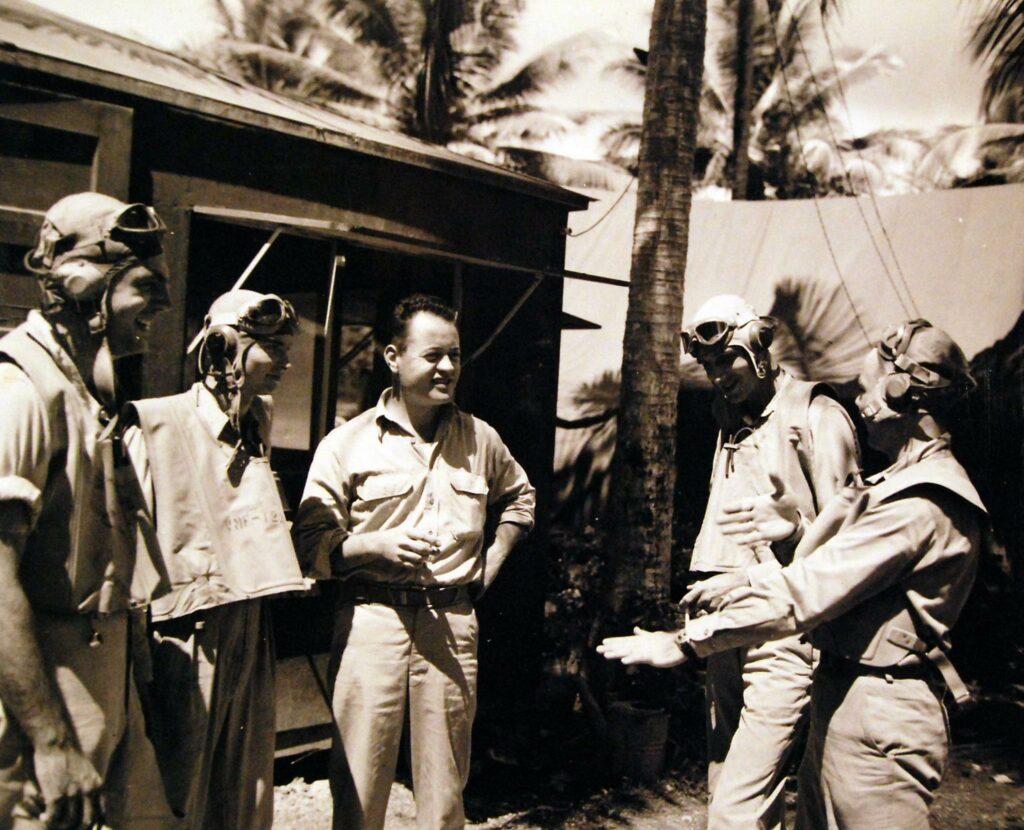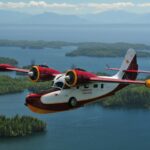The modern Vanuatu archipelago, which consists of around 83 islands, received its name only after becoming independent from the British and French Condominium in 1980. Until then, and during WWII, it was called the New Hebrides. This is the place where in 1942, the Base Button production started – the greatest Vanuatu island – Espiritu Santo (which is mostly called just Santo). In Santo’s principal settlement – Luganville, one of the most unique museums, The South Pacific WWII Museum, was founded by the chairperson Bradley Wood.
The Luganville governing council already expected the requirement for a sizable territory when the project was only in the very first stages. The Museum only had to choose a suitable spot because the Vanuatu government strived to aid the concept of presenting the required land.
Fortunately, space that had once been used by the Motor Torpedo Boat Squadron 2 of the United States Naval Forces in the course of World War II was still accessible. The place where the MTBRONs would connect on the Sarakata River still has some cement blocks on top of which the Quonset cabins for the service and weapons facilities were constructed. It is even more meaningful for the SPWWII Museum to take place since it strengthens its connection to Luganville’s past.
Powerful American military reinforcement facilities were established on the Efate and Espiritu Santo islands in the course of WWII. The Base Button’s (which was actually its name-code) implantation Santo, was clearly the more massive. It actually grew to become the biggest American South Pacific Fleet.
The base’s area was close to 38 sq miles. Additionally, almost all of the region was originally either undeveloped jungle or coconut plantations managed by French landowners. U.S. Navy Seabee engineering divisions had to start from scratch and create everything. The Seabees built five hospitals that could shelter more than 1000 patients, as well as a sizable seaplane base. Some of the worldwide most extensive float dockyards were built at Santo to maintain any vessel in the US Pacific fleet.
Storage was critical to maintaining the fleet supplied, refueled, and rearmed because Base Button basically served as a sizable service and supply base. Quonset huts started to become popular, and hundreds of them were constructed in and near Santo. On Santo and the neighboring Aore Island in September 1944, 38,000 tons of naval ammunition were kept. In addition, Aore had a sizable tank farm that could store roughly 23 million gallons of petroleum.
Various operations in the South Pacific were staged in Santo. As an example, Guadalcanal was crucial to the Allies’ strategy in 1942. Nevertheless, in those days, B-17 bombers from the U.S. Army Air Forces couldn’t reach it. On Santo, it was planned to construct an aerodrome (the initial of four) that could house the aircraft. A 6,000-foot-long airstrip was carved out of the jungle in just 20 days, allowing B-17s to land and fuel up before making their last squeeze to Guadalcanal. It was a remarkable accomplishment for a tiny crew of men who lived in huts in harsh tropical surroundings with very little equipment.
Santo became also the home of the famed VMF-214 ‘Blacksheep Squadron.’ The unit was originally commissioned as Marine Fighter Squadron 214 (VMF-214) on July 1, 1942, at Marine Corps Air Station Ewa on the island of Oahu, Hawaii. Initially called the “Swashbucklers,” the squadron was moved to Turtle Bay Airfield on Espiritu Santo in the New Hebrides in August. There Major Gregory “Pappy” Boyington (Medal of Honor, Navy Cross) took command of the 27 pilots that became the original “Blacksheep” of VMF-214. From Espiritu Santo the squadron was moved forward to Guadalcanal and Henderson Airfield in the Solomon Islands.
If you had to choose a location in the South Pacific to build an exhibition of this kind, Santo would be deserving of the attention the Museum initiative aims to give it, considering the significance of Base Button to the Allied conflict in the Pacific Theatre.
As new artifacts are uncovered, contributed to, bought, passed, or simply obtained in any other way, they are continually added to the acquisition. “Putting the wagon before the horse” is one of the major problems they face. That means that not only do they require the Museum to store the acquisitions, but it is also required a collection to display. They are limited in how much can be collected and kept in climate-controlled environments.
Despite this, we are blessed with a fantastic selection of records, belongings, artifacts, pictures, and more, the majority of which may be seen in the temporary Museum at the location where the main one will be established. All of the things on the exhibition are relics from World War II’s Pacific Theater, some of them from Santo alone.
The gallery of images has grown thanks to some beautiful contributions from the relatives of military veterans who operated on Santo in the course of wartime. The administration is going to give those exhibit names in recognition of the people who served on the island and relocate them across the Museum over time.
The Higgins landing craft is likewise currently in preservation as it waits for rehabilitation. That’s a primary job that requires significant finance. Therefore it’s currently on hold. They do, though, have a recently renovated Jeep that they have intermittently displayed over the past six months, and there is a Jeep in the U. S. that is in “showroom condition” that is going to transport at some point along the way.
A P-38 Lightning wreck that was given to the Museum by a nearby plantation owner is also kept in storage. He refused very lucrative offers from hobbyists who wanted the impact of its parts and instead gave it to the Museum. When timing, finances, and room allow, other items that are now in Australia and the United States will be brought to the Museum.
The collective is made up of an incredibly varied team of folks who are all passionate about bringing something absolutely special to the island of Espiritu Santo. In order to achieve beneficial outcomes for the residents of Luganville, Espiritu Santo, and Vanuatu as a whole, Ni-Vanuatu natives and ex-pats from New Zealand, Australia, the United States, and Japan—the majority of whom call Luganville home—met. Meanwhile, they consider it crucial to remember and honor those who fought in the Pacific during World War II.
The Museum project’s goal is to design something iconic that will figuratively place Luganville on the map. Imagine if Vanuatu became well-known for having one of the “great museums of the world” instead of just being renowned for its beaches on tropical islands and unquestionably lovely residents.
Although this is a lofty goal, the team at the Museum is confident that they can produce something indeed magnificent. Something that will entice visitors to the South Pacific not only for the beaches, palm palms, and exotic cocktails but also so they can check out the rumored “great museum.” They are confident in their abilities. They simply need to locate backers and admirers who share their perspectives.
Regarding the Museum’s location, Vanuatu is admirably positioned halfway between New Caledonia and Fiji; it takes less than three hours to fly there from Australia and slightly longer from New Zealand. Its location in the center of the South Pacific region makes it simple to reach by flight from a variety of nations.
From an internal perspective, the Museum crew truly recognizes a portion of their responsibility as educators for the neighborhood. Regular school visits are always welcomed at the mini-museum. Via history talks and research trips, however, they intend to extend that to the larger community.
Few people, outside history lovers, soldiers’ relatives, and World War II experts, are aware of Espiritu Santo’s contribution to the Pacific War. In order to show gratitude to those who gave so freely of themselves to guarantee liberty in the Pacific, it is crucial that people learn about and understand this history.
There is a common misconception that during World War II, warships simply sailed from important ports like Pearl Harbor, engaged the enemy for a few weeks or months, then sailed back to port for resupply. That is somewhat accurate, but they probably have no idea that there are enormous bases spread out around the South Pacific that keep the ships equipped, fueled, and restocked. Visit the island their ancestors once called home for the best opportunity to understand what they endured.
You may experience being right in the middle of all this great history when you travel to Santo. You have the opportunity to interact with it, feel it, and see it while also experiencing a museum that extends well beyond the boundaries of the soon-to-be-erected walls.
The Museum team is off to a great start with their present Museum and Project Office, which gives people a sense of the project’s direction. An abandoned structure on the edge of the site on the Sarakata River was repaired and furnished thanks to the extraordinary generosity of the board members and neighborhood businesses. Since its debut in 2014, it has served as the team’s personal Museum.
The building itself has undergone a significant change and now includes offices, a kitchen, storage, and display areas for larger things, in addition to museum-quality display cabinets with integrated lighting. It’s a charming tiny museum that is currently Luganville’s most popular tourist attraction.
Of course, the fundamental goal of the concept is to turn the area into a significantly much bigger dedicated museum. The price is currently estimated at $20 million, which paradoxically makes it the greatest building development in Vanuatu since Base Button back in the Second World War.
Therefore, in 2020, they considered how the program would unfold in stages, significantly lowering the original funding goals. They intend to construct one central museum section with a renovated and reworked historic World War II Quonset hut as part of its architecture. It’s an aim that is undoubtedly more attainable for an approximated $300,000 US.
The Museum’s collection has significantly benefited from the expressions of interest and gifts of photos and other things during the previous five years. And one-way individuals can keep supporting the initiative is in this way.
Donations of photos, documents, and other artifacts with a connection to Santo or the Pacific War are always greatly appreciated, and the Museum would be happy to accept them. On the other hand, something as straightforward as signing up for their newsletter (which is entirely free) demonstrates a level of support for what they’re attempting to accomplish.
Naturally, a new home is required for those donated objects. It is not an easy undertaking for a non-profit organization headquartered on a tropical island in the South Pacific that many people have never heard of to raise the money they need, even for Phase 1, even though it is not a large figure.
Finding grants that they might qualify for is complex, and Cyclone Harold and Covid-19 have undoubtedly made things more difficult for the Museum. However, they won’t give up easily. The team only needs to make an appeal to those with like minds who can understand the significance of this initiative and what it can represent for the Vanuatuan people. And if anyone has any advice on how to contact Elon Musk, that would be very appreciated. The Museum crew would love to present him with their fantastic project!
If you could help the Museum in any way, please get in touch with them. Email James Carter, the project manager, at [email protected] or visit www.southpacificwwiimuseum.com






































